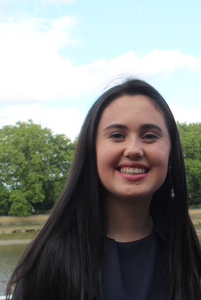9534166
Animal Farm Background
Descrição
Sem etiquetas
Slides por Niamh Ryan, atualizado more than 1 year ago
Mais
Menos

|
Criado por Niamh Ryan
mais de 7 anos atrás
|
|
Resumo de Recurso
Slide 1
Eric Arthur Blair (1903-1950)
Born into a well-off family but ridiculed at school for not being as wealthy as the others
Loved to read and write but had unimpressive grades
He gave his friend a copy of one of his first books and asked him to destroy it - instead the friend brought it to a publisher. He used the pseudonym George Orwell in case the publication was a disaster.
Many publishers refused to publish Animal Farm. A satire of the USSR seemed to controversial and risky at a time when Germany was at war with the Soviet Union.
Orwell is seen as one of the greatest political writers of all time, to the extent that the adjective "Orwellian", used to describe something that is destructive to the welfare of a free and open society.
Slide 2
Russian Revolution 1917
Orwell intended Animal Farm to be a lightly disguised satire of the Russian Revolution of 1917.
After the elimination of the Russian autocracy system, and the Provisional Government (Duma), the revolution resulted in the establishment of the Soviet Union under the control of the Bolshevik party.
There are a number of key figures from the revolution - the Tsar, Lenin, Trotsky and Stalin, who are mirrored in characters of the book.
Slide 3
Tsar Nicholas II
Mirrored by Mr Jones
Russian Emporer, whose reign was characterised by insistence that he was the uncontestable ruler of Russia
Massacred protesters
Millions of Russians lived lives of hunger and want during his reign
Was removed from power after a series of mutinies and strikes
Slide 4
V.I. Lenin
Mirrored by Old Major
Leader of Bolshevik Party
Inspired by Karl Marx's theory of Communism:
"Workers of the world" should unite against their economic oppressers
A communal way of life would allow people to live lives of economic equality
Transformed Russia into the U.S.S.R and introduced the hammer and sickle flag
Died before witnessing the ways in which the revolution and the ideology of Communism would play out
Slide 5
Leon Trotsky
Mirrored by Snowball
Marxist thinker and ally of Lenin
Felt a worldwide series of rebellions were necessary in order to achieve the ultimate aims of the revolution
Leader of Lenin's Red Army
Exiled by Stalin and killed by his agents
Slide 6
Joseph Stalin
Mirrored by Napoleon
Assumed complete control of the Communist Party by 1927 through violent means
Used his secret police, the KGB, to eliminate enemies
Large propoganda campaign
Drew up a Five Year Plan to revitalize the nation's industry and agriculture
Slide 7
Key Features of Russian Revolution
Purges - People who opposed the system were executed or pushed out using the Secret Police (Napoleon's dogs)
Show trials were used to quash any dissention (Confessions of animals conspiring with Snowball)
Idea of 'New Man'/'New Woman' - the ideal Communist who worked for a record breaking number of hours (Boxer's "I will work harder" maxim)
Lenin's cult of personality - his body was put on display after he died (Display of Old Major's skull)
Hitler forged an alliance with Stalin in 1939 but found himself fighting against Stalin's army in 1941. Hitler's forces were defeated in the Battle of Stalingrad, although the city itself sustained huge damages (Hitler represented by Frederick)
The Kronstadt rebellion was a major, unsuccessful rebellion against the Bolshevik party in 1921.(Hen's attempts at uprising by breaking their newly hatched eggs)
In the Tehran Conference of 1943, Churchill, Roosevelt and Stalin came together to try to forge lasting peace after war (a peace that Orwell mocks by having Napoleon and Pilkington flatter each other and then betray their duplicitous natures by cheating in the card game)
0 comentários
There are no comments, be the first and leave one below:
Quer criar seus próprios Slides gratuitos com a GoConqr? Saiba mais.

